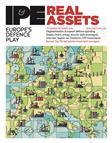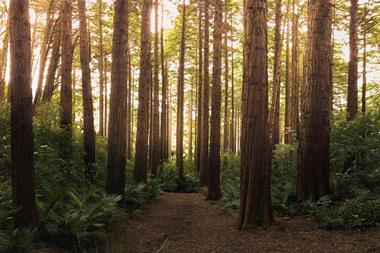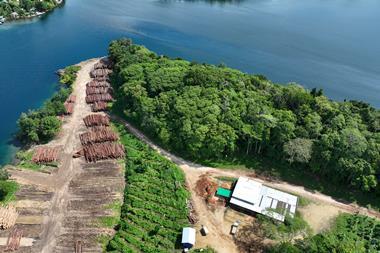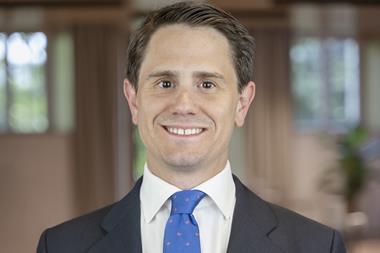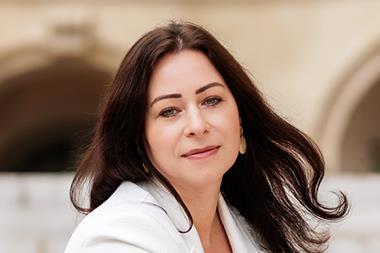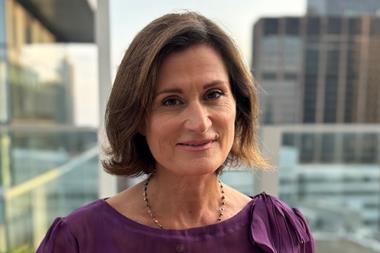Forests and woodlands often set the stage for fairy tales and fantasies, as evidenced by blockbuster releases like Snow White, Avatar and Wicked 2. But away from the cinema and into the investment scene, less enchanting myths about forests – and specifically, forestry investment – are circulating.
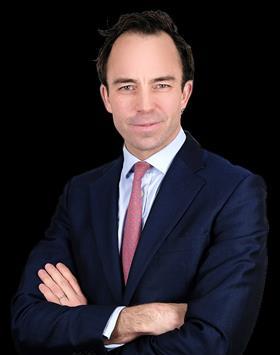
As institutional interest in real asset investing grows, forestry is gaining recognition beyond its core enthusiasts for its ability to produce income and capital growth, alongside added benefits like carbon sequestration and biodiversity protection.
However, trust in sustainability-focused investments remains a challenge. In EY’s 2024 Institutional Investor Survey, 85% of respondents said misleading claims about sustainability are more of a problem today than five years ago, despite regulators’ efforts to quash exaggerated ESG statements.
So while some fairy tales belong in the woods, the forestry sector must rely on robust data to prove sustainability claims and avoid perpetuating the myths that can fuel scepticism.
The challenge now lies in translating sustainability goals into data that supports reporting, benchmarking, and progress tracking.
Below, I explore some of the enduring misconceptions investors hold.
Myth: established forests make better investments
A persistent narrative is that established timberlands are better, safer investments than new greenfield developments. The truth is more nuanced.
Greenfield projects, which involve reforesting degraded or underused land, offer an opportunity to achieve ‘additionality’ – a crucial component of effective carbon sequestration.
Unlike brownfield operations which primarily involve the buying and selling of existing forests, greenfield projects create new carbon sinks and – when correctly executed – help restore ecosystems. This distinction is vital for one simple reason: trees absorb carbon only while growing.
Once mature, they stop capturing significant amounts and eventually release the stored carbon as they decay –sometimes as even more potent greenhouse gases than CO2.
Greenfield investments certainly come with their own challenges. These projects often follow a ‘J-curve’ cash flow model, with significant upfront costs and delayed returns, which can deter investors tied to shorter horizons.
This is why timber investment management organisations, essentially forestry investment advisers, focus heavily on brownfield operations.
While such projects may deliver more immediate financial returns, they often contribute minimally to additional carbon sequestration and frequently result in monocultures – ecosystems dominated by a single species, which significantly reduces biodiversity.
‘Mosaic’ forestry projects can offer a happy medium by combining perpetual commercial forestry with conservation zones. These formations protect natural forests from threats like fires and illegal logging, with the commercial core enabling firebreaks, monitoring, and interventions.
Additionally, they deliver long-term social benefits, such as job creation, and ensure harvested wood is replanted in continuous cycles.
Myth: all carbon credits are created equal
To say that the carbon credit market has come under scrutiny in recent years would be a wild understatement. While the exact proportion of ‘worthless’ credits is debated, Article 6 of the Paris Agreement is set to bring greater oversight, leading to a convergence of voluntary and regulated markets.
This will likely result in individual countries taking responsibility for regulating their own carbon markets.
For forestry investors, the upshot is clear: regulatory uncertainty is currently a barrier to restoring widespread trust in carbon markets, and resolving this will take time. This, in turn, weakens the thesis of today’s carbon credits as a standalone investment.
The best forestry investments therefore need to be based on scientifically proven carbon sequestration, which can withstand changes in regulatory standards, as well as offering ‘old-fashioned’ real asset-based financial returns.
Forestry plays a critical role in addressing both the ‘flow’ and ‘stock’ of carbon emissions. The flow problem refers to a company’s ongoing emissions and what must be done to offset these emissions to reach net-zero. The stock problem, meanwhile, is the sequestration of CO2 already in the atmosphere – a much larger challenge, but one that needs to be tackled to reverse climate change.
Some forward-thinking companies, like Microsoft, have taken steps to address the stock problem, committing to offset all emissions ever produced since its founding in 1975.
Critics may claim that only high-margin companies can afford such ambitious goals, but innovative forestry models are making large-scale sequestration achievable for a broader range of businesses and investors.
This myth of all carbon credits being equal, however, is one we must challenge; investments grounded in evidence-based sequestration are the true game changers in the fight against climate change.
Myth: forestry investors should focus on developed markets
It’s often assumed that institutional investors are best to invest in forestland in developed markets like the US, Europe, Australia, and New Zealand. There is a stubborn misconception that it is impossible to mitigate the risks associated with Latin American forestry, due to the association with political instability and economic volatility.
This view is outdated. Countries like Uruguay and Paraguay are joining Brazil as highly attractive destinations for forestry investments due to their democratic governance, dollarised economies, and established logistics for transporting heavy goods.
Paraguay is also nearing an investment-grade rating, further boosting its appeal as an investment destination.
Successful outcomes in forestry investment hinge on striking a balance between the profit motive, the environment, and the interests of local communities. Mosaic models do this by promoting biodiversity, providing meaningful employment, and improving access to forestland for local people.
This approach not only fosters community wellbeing but also ensures that all areas of the project are accessible and open to inspection, helping to minimise the risk of illicit activities deep within the forest. By supporting local livelihoods and respecting human nature, we reduce the economic incentives for encroachment on the forest.
This, in turn, strengthens our ability to protect the environment while still generating sustainable returns.
Crucially, tree growth rates in Latin American countries can be up to 10 times faster than in many OECD nations. This exceptional growth is a crucial factor for achieving substantial carbon sequestration, making this region not only a viable choice for financial returns but also for meeting sustainability goals.
Moving beyond the myths
As investors grapple with the growing demand for measurable ESG outcomes, the future of forestry investment lies in projects that combine strong financial returns with measurable, scientifically validated environmental impact.
By designing underlying forestry assets to include robust carbon sequestration strategies, we can create a perpetual asset class rooted in nature – one that delivers cash yields, sequesters carbon, prevents deforestation, enhances biodiversity, and generates meaningful benefits for local communities.
To read the latest IPE Real Assets magazine click here.

